If you’re looking to upgrade your vehicle’s performance, high performance exhaust headers and manifolds are a must-have. They offer numerous benefits, from improved horsepower and torque to better fuel efficiency.
But before you make a purchase, it’s important to understand the difference between exhaust headers and manifolds, and how their design can impact your vehicle’s performance. In this article, we’ll explore the factors to consider when choosing high performance exhaust headers and the importance of proper installation.
Key Takeaways
- Upgrading to high performance exhaust headers can result in improved horsepower and torque, better fuel efficiency, reduced backpressure, enhanced engine performance, and a sportier sound.
- Exhaust headers and manifolds have different purposes and functions in a vehicle’s exhaust system. Headers offer performance advantages over manifolds, such as improved flow, better scavenging, and increased horsepower.
- Headers are designed differently from manifolds and are often made from lightweight materials for improved performance. The installation process and compatibility considerations may require modifications and the use of aftermarket parts.
- When choosing high performance exhaust headers, factors to consider include the durability of materials used, heat and corrosion resistance, quality of welds, and the reputation of manufacturers for quality craftsmanship and long-term performance.
Benefits of Upgrading to High Performance Exhaust Headers

If you’re looking to maximize the power and efficiency of your vehicle, upgrading to high performance exhaust headers can provide significant benefits. By replacing your stock exhaust headers with high performance ones, you can improve the overall performance of your engine. These headers are designed to optimize exhaust flow, allowing your engine to breathe better and produce more power. With improved exhaust flow, your engine can expel exhaust gases more efficiently, resulting in increased horsepower and torque.
Another benefit of upgrading to high performance exhaust headers is improved fuel efficiency. When your engine can expel exhaust gases more easily, it doesn’t have to work as hard, which can lead to better fuel economy. Additionally, high performance headers can reduce backpressure, which is a common problem in stock exhaust systems. By reducing backpressure, your engine can operate more efficiently and effectively.
Furthermore, high performance exhaust headers can enhance the overall sound of your vehicle. These headers are designed to produce a more aggressive and throaty exhaust note, giving your vehicle a sportier and more exhilarating sound. This can greatly enhance your driving experience and make your vehicle stand out from the crowd.
Understanding the Difference Between Exhaust Headers and Manifolds

Let’s talk about the points that will help you understand the difference between exhaust headers and manifolds. First, we’ll look at the purpose of each component and how they function in a vehicle’s exhaust system. Then, we’ll explore the performance advantages that headers offer over manifolds, such as improved power and torque. And lastly, we’ll discuss the installation process and compatibility considerations when upgrading to high performance headers.
Purpose of Each
To understand the difference between exhaust headers and manifolds, you need to know their purposes. Exhaust manifolds are responsible for collecting exhaust gases from the engine’s cylinders and channeling them into a single pipe. They’re typically made of cast iron and are designed to withstand high temperatures. Manifolds are simple in design and are often used in stock vehicles.
On the other hand, exhaust headers are designed to maximize the performance of the engine. They’ve individual tubes for each cylinder, allowing the exhaust gases to flow more freely and efficiently. Headers are usually made of stainless steel or ceramic-coated steel and are commonly used in high-performance vehicles.
Performance Advantages
You can experience significant performance advantages by choosing exhaust headers over manifolds. Exhaust headers are designed to improve the flow of exhaust gases from the engine cylinders, allowing for better scavenging and increased horsepower. Unlike manifolds, which collect exhaust gases from multiple cylinders into a single pipe, headers have individual tubes for each cylinder.
This design reduces backpressure and improves exhaust gas flow, resulting in improved engine efficiency and increased power. Additionally, headers are typically made from lightweight materials such as stainless steel or ceramic-coated steel, which helps to reduce overall vehicle weight and improve performance.
Installation and Compatibility
First, you need to understand the difference between exhaust headers and manifolds in terms of installation and compatibility. When it comes to installation, exhaust manifolds are typically easier to install because they’re designed to fit directly onto the engine block. They’re a one-piece unit that replaces the factory manifold, making the installation process straightforward.
On the other hand, exhaust headers require a bit more time and effort to install. Headers are designed to be individual tubes that connect to each cylinder’s exhaust port, and they often require modifications to fit properly.
In terms of compatibility, exhaust manifolds are generally more compatible with stock engine components, while headers may require additional modifications or aftermarket parts to ensure proper fitment and performance. Understanding these differences will help you choose the right option for your vehicle.
Factors to Consider When Choosing High Performance Exhaust Headers
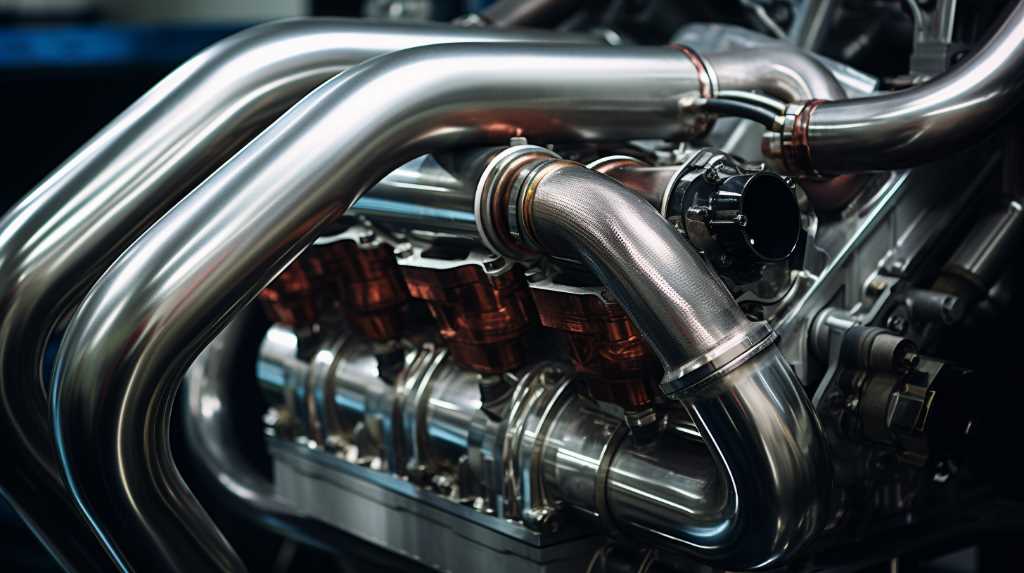
When selecting high performance exhaust headers, one crucial factor to consider is the durability of the materials used. High-performance exhaust headers are subjected to extreme heat and pressure, so it’s essential to choose headers made from materials that can withstand these conditions.
Stainless steel is a popular choice for high-performance headers due to its excellent heat resistance and corrosion resistance. It’s also durable and long-lasting, making it suitable for high-performance applications. Another option is ceramic-coated headers, which provide additional heat insulation and enhance the durability of the headers.
Additionally, titanium headers are known for their lightweight and high strength properties, making them ideal for high-performance vehicles. Moreover, it’s important to consider the quality of the welds on the headers. Headers with well-executed welds are less likely to crack or fail under extreme conditions.
Therefore, it’s important to choose headers from reputable manufacturers known for their quality craftsmanship. In conclusion, when selecting high-performance exhaust headers, it’s crucial to consider the durability of the materials used, including the choice of stainless steel, ceramic coating, or titanium, as well as the quality of the welds.
How Exhaust Header Design Affects Performance
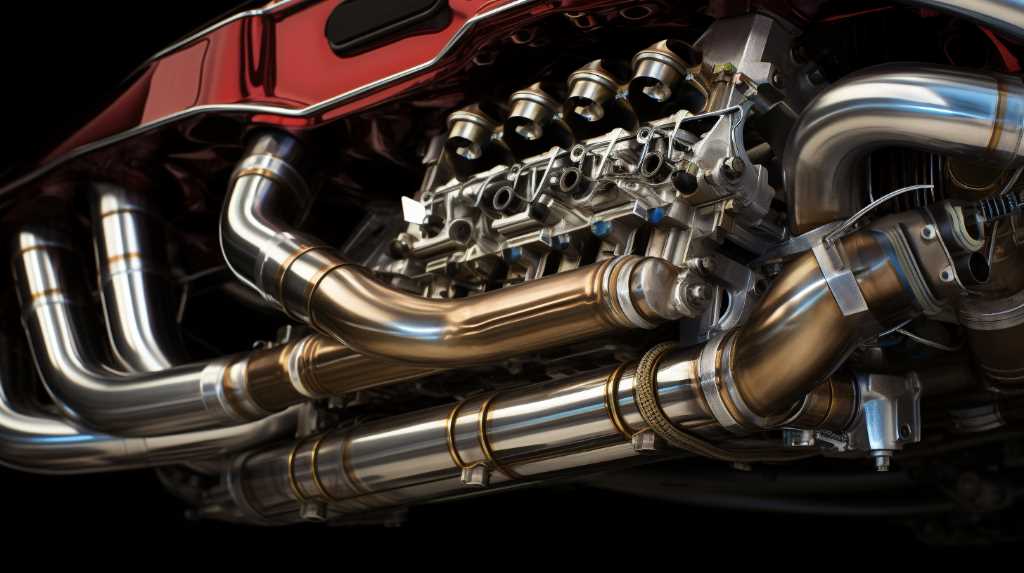
To optimize performance, consider how the design of your exhaust headers affects the overall efficiency of your vehicle. The design of your exhaust headers plays a crucial role in determining how efficiently your engine can expel exhaust gases. A well-designed exhaust header can significantly improve the airflow, which directly impacts the engine’s performance.
One important factor to consider is the length and diameter of the exhaust tubes. Longer tubes help in creating a scavenging effect, which improves the evacuation of exhaust gases from the combustion chambers. This results in better engine breathing and increased power output. On the other hand, the diameter of the tubes affects the velocity of the exhaust gases. A larger diameter may lead to decreased velocity and reduced scavenging effect, while a smaller diameter can cause backpressure and hinder performance.
The primary tube design also affects performance. Equal-length primary tubes help in achieving better exhaust gas flow balance and can result in improved power and torque across the entire RPM range. Tri-Y headers, which have two sets of primary tubes merging into a collector, can provide excellent low-end torque and mid-range power.
Additionally, the material used in the construction of exhaust headers can impact performance. Stainless steel headers offer durability and resistance to corrosion, while ceramic-coated headers can provide better heat insulation, reducing underhood temperatures.
The Importance of Proper Exhaust Header Installation
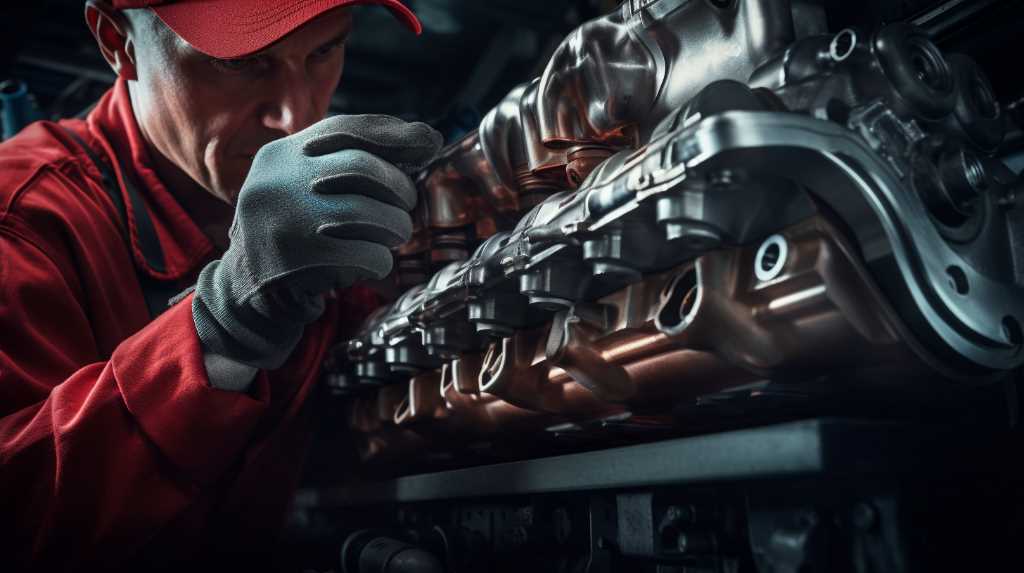
When it comes to installing high performance exhaust headers, there are a few key tips to keep in mind. First, make sure to follow the manufacturer’s instructions carefully to ensure proper fitment.
Additionally, pay attention to the torque specifications and use a torque wrench to tighten the bolts evenly. Proper installation of exhaust headers is crucial for maximizing engine performance and preventing leaks.
Installation Tips for Headers
- You should always carefully follow the instructions for proper installation of exhaust headers to ensure optimal performance. Here are some installation tips to help you with the process.
- First, make sure to clean the mounting surface of the cylinder head thoroughly before installing the headers. This will help promote a secure and leak-free connection.
- Next, ensure that all the necessary gaskets and hardware are included in the header kit and are in good condition.
- It’s also important to torque the header bolts to the manufacturer’s specifications to prevent any leaks.
- Additionally, check for any interference with other components such as steering linkage or motor mounts and make any necessary adjustments or modifications.
- Lastly, it’s recommended to use high-quality exhaust sealant on the header flanges to further enhance the seal and prevent any exhaust leaks.
Impact on Engine Performance
Regularly inspect and maintain your exhaust headers to ensure proper installation, as it has a significant impact on your engine’s performance. Properly installed exhaust headers can improve engine performance by increasing horsepower and torque. By reducing exhaust backpressure and improving exhaust flow, headers allow the engine to breathe more efficiently. This leads to improved combustion and a more powerful engine.
In addition, properly installed headers can also enhance throttle response and improve fuel efficiency. However, if the headers aren’t installed correctly, it can lead to exhaust leaks, which can negatively impact engine performance. Leaks can disrupt the exhaust flow and cause a loss of power. Therefore, it’s crucial to ensure that your exhaust headers are properly installed and regularly inspected to optimize your engine’s performance.
Exploring Different Types of Exhaust Manifolds for Performance Applications
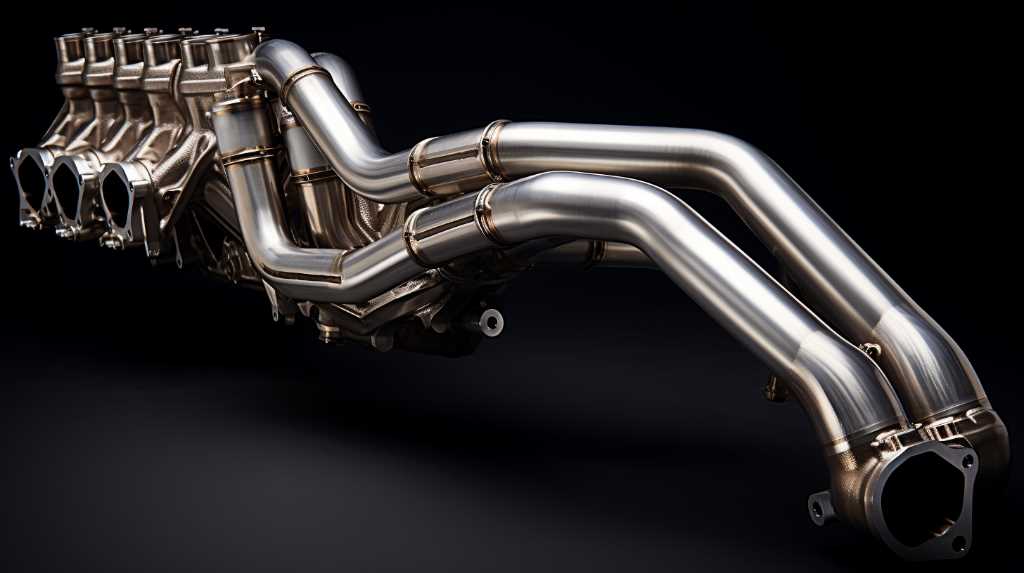
If you’re looking to maximize the performance of your vehicle, consider upgrading to one of the many different types of exhaust manifolds available. An exhaust manifold plays a crucial role in the overall performance of your engine by efficiently expelling the exhaust gases. There are several types of exhaust manifolds to choose from, each offering its own set of advantages and considerations.
One type of exhaust manifold commonly used in performance applications is the tubular design. Tubular manifolds are known for their smooth and equal-length runners, which help to improve exhaust flow and reduce back pressure. This can result in increased horsepower and torque, as well as improved throttle response.
Another popular option is the log-style manifold. This type of manifold features a simple design with a single outlet for all the cylinders. While log manifolds may not offer the same level of performance as tubular manifolds, they can still provide noticeable gains in power and torque, especially in lower RPM ranges.
For those seeking the ultimate in performance, a set of individual runners or headers may be the way to go. Individual runners offer the best exhaust flow and can significantly increase horsepower and torque across the entire RPM range. However, they can be more expensive and require additional modifications for proper installation.
Maximizing Scavenging Efficiency With High Performance Exhaust Manifolds
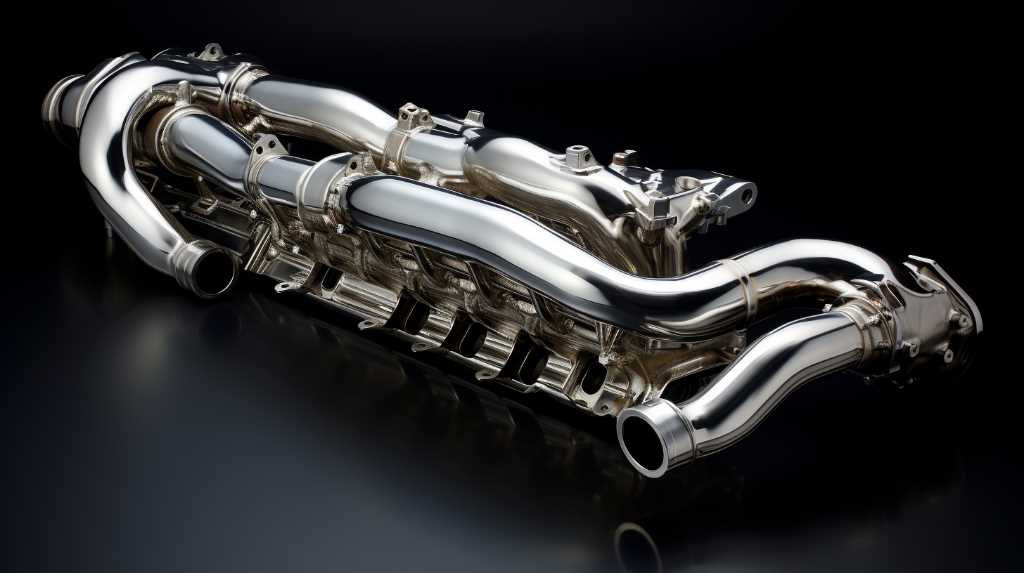
To achieve maximum scavenging efficiency, it’s important to carefully select and install high-performance exhaust manifolds that optimize exhaust gas flow and minimize back pressure. High-performance exhaust manifolds are designed to improve the overall performance of your vehicle by maximizing the extraction of exhaust gases from the combustion chambers.
One key factor in maximizing scavenging efficiency is the design of the exhaust manifold. High-performance exhaust manifolds are typically constructed with equal-length runners that ensure an equal volume of exhaust gases is collected from each cylinder. This promotes a more balanced exhaust flow, reducing any potential restrictions or back pressure.
Furthermore, high-performance exhaust manifolds often feature smooth, mandrel-bent tubing. This design allows for improved exhaust gas flow by minimizing any sharp bends or restrictions that could impede the flow of gases. By optimizing the exhaust gas flow, high-performance exhaust manifolds help to reduce back pressure, allowing the engine to breathe more freely.
In addition to the design, material selection is also crucial in maximizing scavenging efficiency. High-performance exhaust manifolds are often made from materials like stainless steel or high-grade cast iron, which offer superior durability and heat resistance. These materials can withstand high exhaust temperatures without warping or cracking, ensuring consistent performance and longevity.
Common Mistakes to Avoid When Selecting and Installing Exhaust Headers

You should always double-check the compatibility and fitment of the exhaust headers before purchasing and installing them, as improper selection and installation can lead to performance issues and potential damage to your vehicle. One common mistake to avoid isn’t considering the specific requirements and specifications of your vehicle. Different vehicles have different engine sizes, configurations, and performance needs, so it’s crucial to choose headers that are specifically designed for your make and model.
Another mistake to avoid is overlooking the quality and construction of the headers. Cheap and low-quality headers may not provide the performance gains you desire and could even cause leaks or premature failures. It’s important to invest in high-quality headers that are made from durable materials and have proper welds and reinforcements.
Furthermore, it’s crucial to ensure that the headers are installed correctly. This includes proper alignment, tight and secure connections, and the use of appropriate gaskets and fasteners. Failure to install the headers properly can result in exhaust leaks, poor performance, and potential damage to other components of your vehicle.
Lastly, it’s essential to follow the manufacturer’s instructions and recommendations for installation. Each set of headers may have specific requirements and steps that need to be followed for optimal performance and longevity. It’s important to read and understand these instructions thoroughly before beginning the installation process.
Tips for Maintaining and Caring for High Performance Exhaust Headers and Manifolds
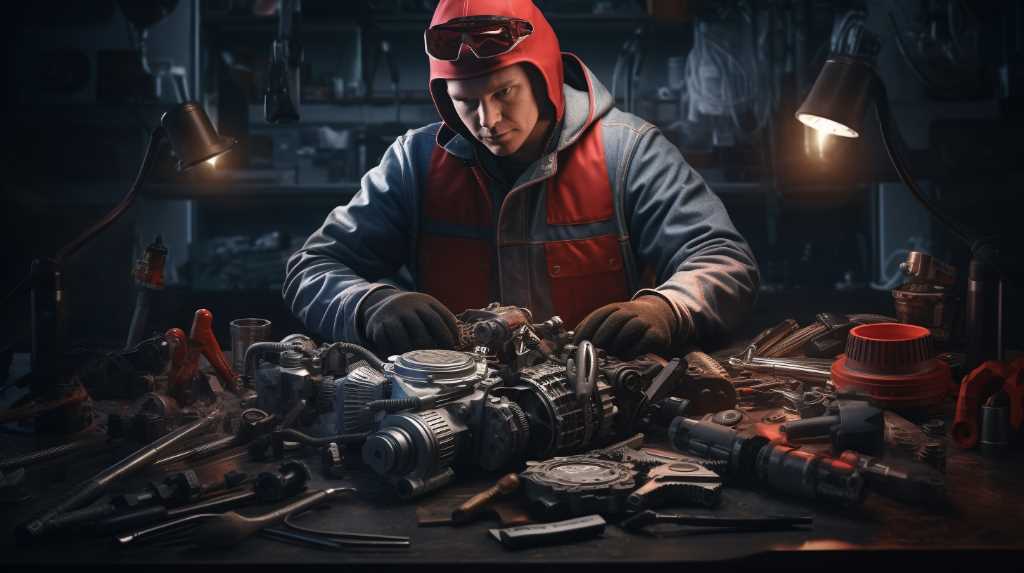
First, regularly inspect your high performance exhaust headers and manifolds for any signs of damage or wear. This is important because any cracks, leaks, or loose connections can negatively impact the performance of your vehicle. Look for any visible signs such as rust, corrosion, or discoloration. Additionally, check for any loose bolts or gaskets that may need tightening or replacing.
Second, it’s crucial to keep your exhaust headers and manifolds clean. Over time, they can become clogged with carbon deposits and other debris, which can restrict the flow of exhaust gases. This can lead to decreased performance and fuel efficiency. Use a wire brush or a specialized cleaner to remove any buildup on the surfaces of the headers and manifolds. Be sure to follow the manufacturer’s instructions and take precautions to protect yourself from any chemicals used in the cleaning process.
Third, consider applying a high-temperature paint or coating to your exhaust headers and manifolds. This can help protect them from corrosion and extend their lifespan. Make sure to choose a product that’s specifically designed for high-performance applications and follow the instructions for proper application.
Finally, it’s recommended to check the alignment of your headers and manifolds periodically. Over time, they can become misaligned due to vibrations and thermal expansion. This can cause leaks and reduce performance. If you notice any misalignment, consult a professional to have them adjusted or repaired.
Frequently Asked Questions
Can I Install High Performance Exhaust Headers on My Stock Vehicle?
Yes, you can install high performance exhaust headers on your stock vehicle. They can improve your vehicle’s performance by increasing airflow and reducing backpressure, resulting in better horsepower and torque.
What Are the Potential Drawbacks of Upgrading to High Performance Exhaust Headers?
When upgrading to high performance exhaust headers, potential drawbacks may include increased noise levels, decreased fuel efficiency, and the need for additional modifications. However, these drawbacks can be balanced out by the improved engine performance and sound.
How Do I Determine the Correct Size and Design of Exhaust Headers for My Specific Vehicle?
To determine the correct size and design of exhaust headers for your specific vehicle, consult your vehicle’s manual or reach out to a trusted mechanic. They can provide expert advice based on your vehicle’s specifications.
Can High Performance Exhaust Headers Improve Fuel Efficiency?
Yes, high performance exhaust headers can improve fuel efficiency. They help to increase exhaust flow, reducing back pressure and allowing the engine to breathe better. This can lead to improved fuel combustion and increased mileage.
Are There Any Legal Restrictions or Regulations Regarding the Use of High Performance Exhaust Headers?
Yes, there are legal restrictions and regulations regarding the use of high performance exhaust headers. It’s important to research and comply with local laws to ensure you stay within legal bounds.
Conclusion
In conclusion, upgrading to high performance exhaust headers and manifolds can greatly enhance the performance of your vehicle. By understanding the difference between headers and manifolds, considering important factors in their selection, and ensuring proper installation, you can maximize their efficiency.
Avoiding common mistakes and properly maintaining them will also prolong their lifespan. So, if you want to improve your vehicle’s performance, investing in high performance exhaust headers and manifolds is a wise choice.
Related Articles
Be sure to also check out these articles right here at Motion Performance Motorsports
The Ultimate Guide to Performance Car Exhaust Systems
Next Exhaust Article: High Performance High-Flow Catalytic Converters
Previous Exhaust Article: High Performance Axle-Back Exhaust Systems

Hey there, I’m Terra Frank, the driving force behind Motion Performance Motor Sports. I’m thrilled to have you here, exploring the fascinating world of cars, trucks, and everything related to automotive performance and accessories.




